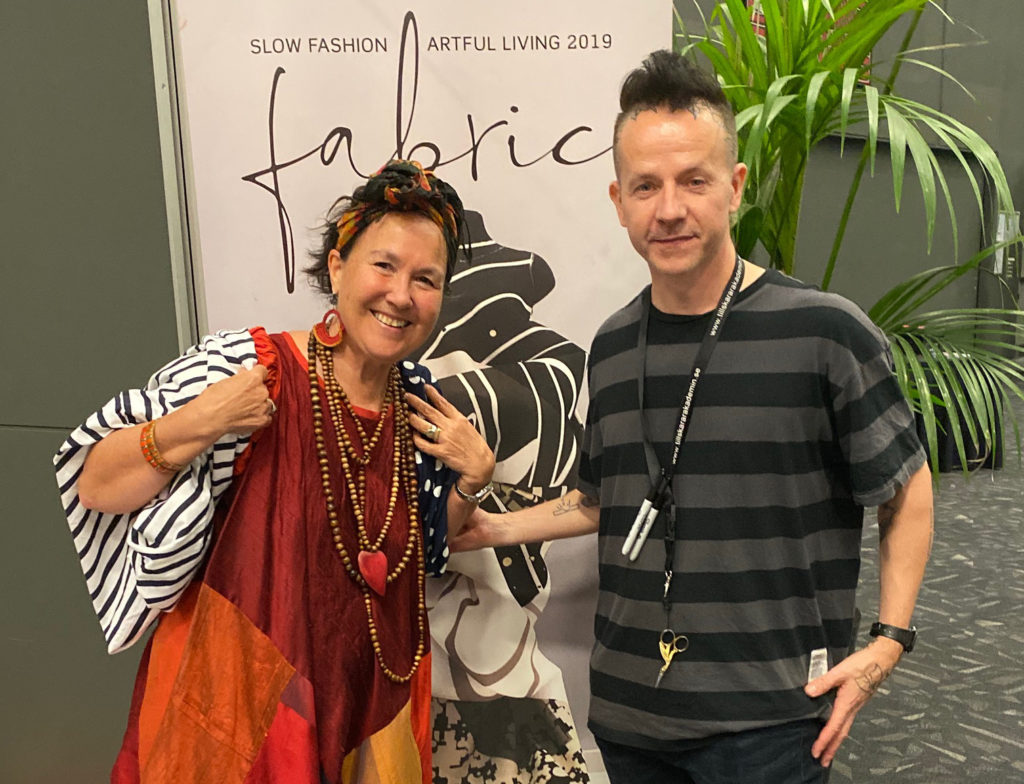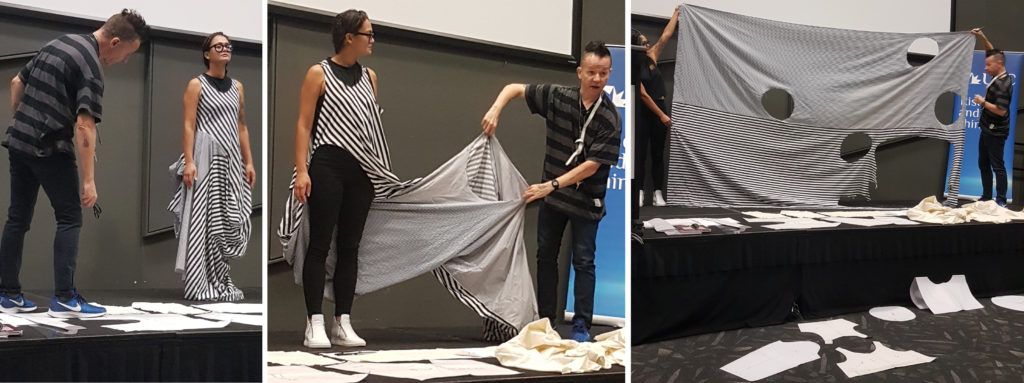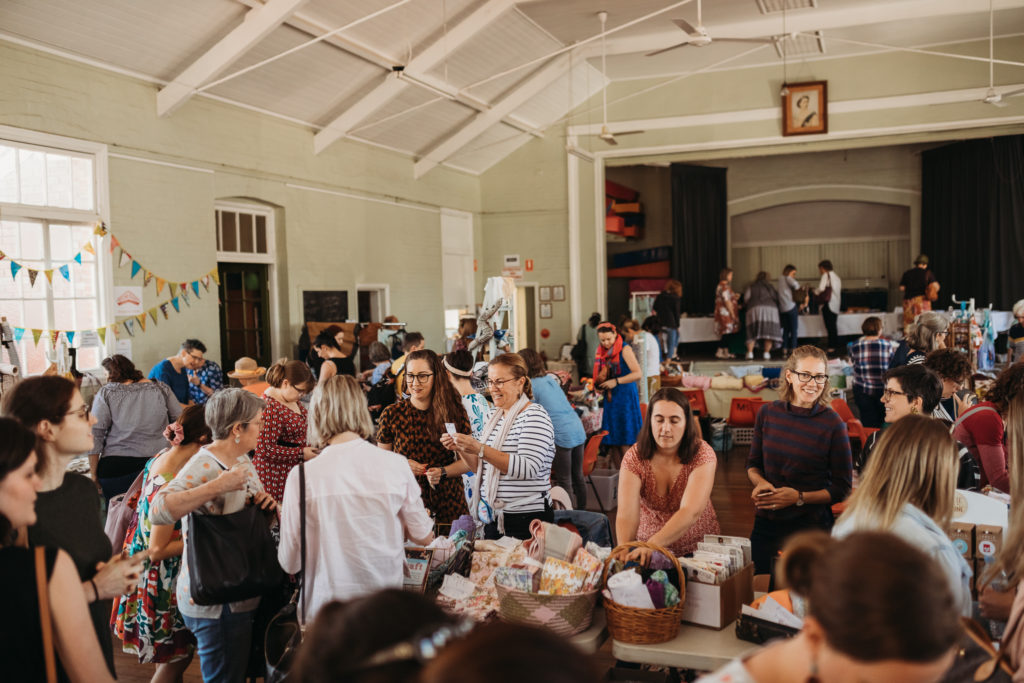By Jane Milburn *
Sowing or sewing? If you are a gardener or a sewist, you reap what you sow or sew. While there are many gardeners among us growing some food, there are fewer sewists making their own clothes.
In the same way many are sowing seeds to yield nutritious home-grown, local, natural food, it is time to invest energy in sewing local natural clothes.
With global supply chains pumping out 80 billion garments each year, most people have lost sight of where and how things are made, and what from. Slavery combined with increasing use of synthetic/plastic fibres, has led many to buy two to four times what we used to, resulting in waste and pollution, and a loss of skills and knowledge about clothes.
Over the past two decades, globalisation and production efficiencies have meant it is cheaper to buy clothes than make them. We’ve got used to affordable, ever-changing styles. Shopping is addictive and we’re encouraged to buy quantity over quality for the good of the economy. It is only when we stop and think about why clothes are so cheap that we come to understand they are not properly costed, that exploitation of people and resources exists in the system.
Each of us influences the future of the fashion industry through our buying choices. Surely the beginning of a new decade is a great time to turn over a new leaf. Let’s think about fewer clothes of better quality that we wear for longer.

Author Jane Milburn with Julian Roberts from Royal College of Art London at the Fabric subtraction-cutting workshop held at the University of the Sunshine Coast.
Clothing culture is changing. Perhaps the high-tide on fast fashion will be marked by the recent filing for bankruptcy by Forever 21 in the United States.
This global fast fashion brand arrived in Brisbane in 2014. I know that because I wrote about it during my 365-day Sew it Again campaign http://www.sewitagain.com/2014/10/change-clothes-to-wear/ when I publically declared that I wear secondhand clothes and sew – to be sustainable, resourceful and autonomous.
My 25 October 2014 post said: “I am adopting an alternative approach to something fresh everyday. The Sew it Again project is posting something fresh by upcycling clothing that already exists, rather than buying new. It is a social-change project, based on the premise that the ‘greenest’ clothing is that which already exists in the world. By upcycling garments from our own and others wardrobes, we can have something ‘new’ created from reject or unworn garments. The project aims to shift thinking about the way we consume clothing and textiles. It engages old-fashioned sewing skills, encourages a culture of thrift, and reflects concern for where mindless consumption of fast fashion is leading.”
While I was interested in influencing change, I did not really expect to see articles in mainstream Australian newspapers in 2019 reporting a resurgence in sewing as a personal pushback against fast fashion exploitation, or that thrifting is now projected to outstrip new fast fashion consumption according to ThredUp, a secondhand clothing retailer in the United States.
Yet that is what has happened. Wearers are changing their purchasing habits. This is based on a combination of factors, including the realisation that slavery continues despite calls for change. Although there is a lot more interest now in natural fibres, the dominant clothing fibre remains polyester which is in fact plastic and sheds microplastic into the ecosystem. Textile waste and pollution problems continue to expand, although we now know from waste reduction group WRAP in the UK that extending the life of existing garments by nine months reduces their water and carbon footprint by up to 30 percent.
Thrifting is hot. Across the generations, there are many who love preloved, yet it seems millennials concerned about sustainability and declining disposable income are driving the new trend to buying clothes that already exist. Thrifting is now aided by technology and moving beyond opshops and weekend markets to be accessible online with curated stores, facebook groups and rental agencies.
Changing the fabric
As part its Fabric 2019 program of slow fashion and artful living, the Sunshine Coast Council included events on sustainable styling through thrifting and clothing swaps.
It also hosted a visit by Professor Julian Roberts from Royal College of Art, London, to share his innovative ideas about designing garments based on subtracting cutting.
Julian spoke at a Considered Fashion Design Forum organised by University of the Sunshine Coast lecturer Deb Fisher and ran a one-day workshop at USC where he shared his process and technique of removing circles and other shapes for the body to pass through.
He believes it is important to freely show and share the making process, so that people can see into it and try for themselves as a way of passing on the skills and learning by doing.
“We need to value cloth, and the stitching, sewing and touching that goes into making clothes. An opaque fashion system where you don’t see the process is unethical because the team of people behind the garments is now acknowledged. It is only the designer out front taking the bows.”
“When I show and share the process, and people understand the inner geometry and process of making, they will value it more.”
To find out more about subtraction-cutting techniques, you can download Julian Roberts’ Free Cutting pdf for free and watch various tutorials online.
The textile swing
When we know the story, the provenance and history of textiles and patterns, this helps carry them forward into a place where they can come to life again.
At this time of excess consumption, the concept of keeping beautiful textiles in circulation while engaging and building the slow fashion community is the brain child of Sian Robinson.
Sian knows from experience that sewists, crafters and makers all have a stash hidden away and envisaged the Recycled Textile Market full of beautiful fabrics, patterns, zips, buttons and all things sewing and craft.
On August 25, the first RTM took place with 30 stall holders offering pre-loved new and old, vintage and retro items attracting about 500 people interested in selling and/or replenishing their stashes.
“The energy in the beautiful Morningside School of Arts on the day was amazing. People loved being with other like-minded creatives, and some travelled from Ipswich and the coast to be there,” Sian said.
She said RTM is dedicated to the slow fashion movement and now the market is established, she is planning to bring the maker community together in other ways, to meet and talk and make things, and enable intergenerational friendships and skill sharing for a sustainable future.
“Whether you’re turning a tablecloth into trousers, sewing scraps into a skirt, or buying a handmade dress from a local designer; our market helps provide a platform for the sewing community to support the slow sew,” Sian said. The next Recycled Textile Market will be on Sunday, 29 March 2020.
- This article was first published in the QCWA’s Ruth magazine, Summer 2019 edition. Ruth Summer selected pages

